Jun 3, 2025 11:25 AM
In Memoriam: Al Foster, 1943–2025
Al Foster, a drummer regarded for his fluency across the bebop, post-bop and funk/fusion lineages of jazz, died May 28…
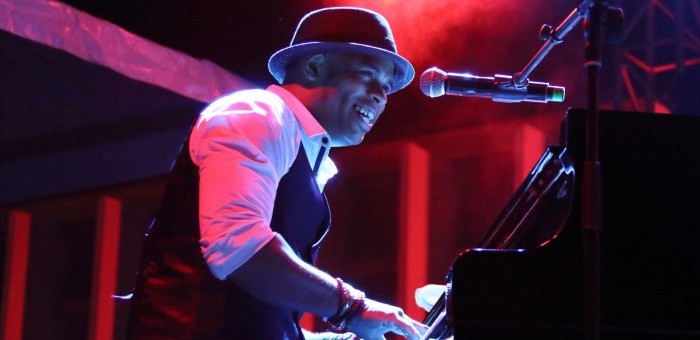
Roberto Fonseca performs at the Kriol Jazz Fest in Cabo Verde on April 15.
(Photo: Sharonne Cohen)It’s Easter weekend in Praia, Santiago Island, and the Kriol Jazz Festival is about to kick off. There’s a palpable excitement in the salty ocean air, as hundreds of people crowd Luis Camõesks Square.
Consisting of ten volcanic islands, the archipelago nation that is Cabo Verde—perhaps best known as the birth place of the legendary Cesária Évora, and an inspiration for Horace Silver’s Cape Verdean Blues—is located 350 miles off the west coast of Africa. Cabo Verde was a central hub of the transatlantic slave trade; impacted by centuries of international commerce and over 500 years of Portuguese colonial rule (ending in 1975, when the nation finally gained independence), Cabo Verde’s rich history and culture include distinct musical genres blending African, European and Portuguese influences.
For the ninth consecutive year, Praia—the nation’s capital—hosted the Kriol Jazz Festival (April 8, 14 and 15) with the mission of promoting Praia and Cabo Verde through art and culture, particularly music. Each of the festival’s three nights showcased a local artist, followed by performances by international musicians.
The festival also featured a three-day educational program in collaboration with Berklee College of Music, the local Ministry of Culture and the city of Praia, which included performance workshops and master classes offered by Berklee faculty, led by drummer Ron Savage.
Opening night featured guitarist-singer-songwriter Silvano Sanches in collaboration with Kala Jula (the duo of Samba Diabaté and Vincent Zanetti), a set that fused traditional Cabo Verdean and African rhythms. Born into a family of griots, Diabaté is one of the most sought-after guitarists on the Malian scene, while Zanetti, a Swiss multi-instrumentalist and producer interested in West African music, has made Mali his second home. Zanetti’s encounter with Sanches in his adoptive city of Monthey, Switzerland led to a collaboration of all three, with material drawn from both repertoires. Illustrating the rhythmic African anchor of Cabo Verdean music, the trio demonstrated not only superior musicianship, but the universality of the blues.
A very different, engaging Cabo Verdean voice followed with Hélio Batalha, a 26-year-old rapper who launched his musical career a decade ago, when his song “Mas Saúde” won a radio contest. A charismatic performer with an enthusiastic following, Batalha rhymes about social and political realities in his native land and around the world, calling for social activism and responsibility.
The final performance of the night was delivered by Fidjos di Codé di Dona—brothers Adelino & Emílio Letício Ferreira Vaz, sons of late legendary Cabo Verdean accordionist and funaná artist Codé di Dona (born Gregório Vaz).
Funaná, a fast-paced song traditionally accompanied by concertina and ferrinho (a metal percussion instrument resembling a güiro), is one of Cabo Verde’s traditional musical forms, symbolizing the struggle for independence and banned by Portuguese colonial rulers. Following in their father’s footsteps, albeit with a more contemporary approach, the Vaz brothers carried on the tradition of the iconic diatonic accordion.
The festival resumed on April 14, on the heels of the Atlantic Music Expo (AME)—four days packed with workshops and showcases featuring international and Cabo Verdean talent, including the mesmerizing Tradison di Terra, performing traditional batuku (a female lead and chorus singing, clapping, drumming and dancing).
The night began with a moving tribute to Cabo Verdean guitar legend Humberto Bettencourt Santos (known as Humbertona), who was in attendance. The virtuoso was celebrated through videotaped homage and a performance of six guitarists celebrating “the grand master of our music” with the characteristic and distinctive Cabo Verdean morna style (traditionally a poem sung in medium tempo, accompanied by strings)—the quintessential expression of national culture.
The diverse night of music continued with Cabo Verdean vocalist and drummer Grace Évora; French jazz guitarist Sylvain Luc in trio format; Brazilian singer-songwriter-guitarist Maria Gadu; and Haitian-American singer-songwriter Leyla McCalla, alternating between cello and banjo as she performed originals and traditional Haitian songs in English, French and Haitian kreyol. On “Manman Mwen” McCalla engaged the audience in call-and-response. Her effort to communicate in Afro-Portuguese kriol was clearly appreciated by the audience, which rewarded her performance with a standing ovation.
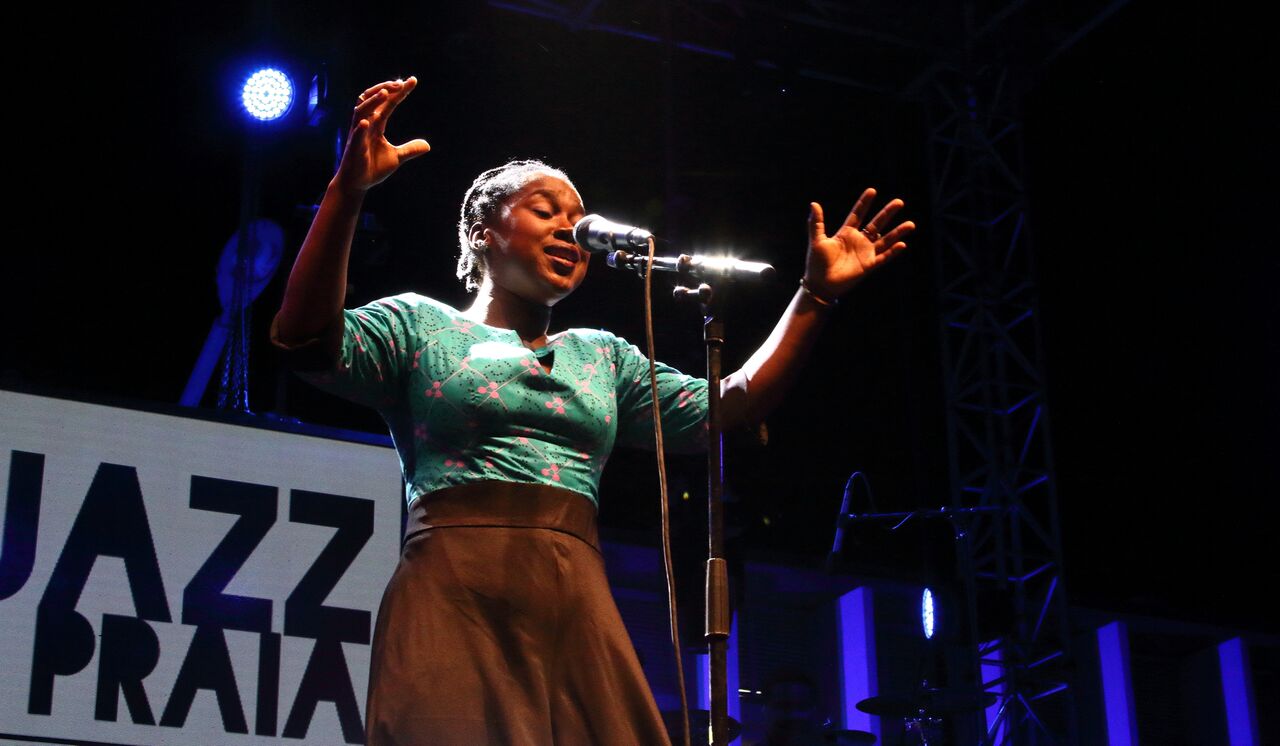
Elida Almeida (Photo: Sharonne Cohen)
Closing night began with 24-year-old Cabo Verdean singer-songwriter Elida Almeida. The captivating, dynamic vocalist performed songs from her new EP, Djunta Kudjer, including “Bersu d’Oru,” based on the lesser-known traditional tabanka rhythm—an exuberant symbol of the struggle for national independence (tabanka was outlawed by the Portuguese in 1896 due to insurrection against colonial rule and the Catholic church). With “Bitori Nha Bibinh” Almeida paid homage to octogenarian funaná legend Bitori, who is experiencing a much-deserved comeback. Singing along with her, the audience was clearly moved, calling “Otra! Otra! Otra” as she left the stage.
American fusion outfit Spyro Gyra followed, with bassist Scott Ambush’s darkly funky “Wiggle Room” and drummer Lionel Cordew’s pyrotechnics on his own “Lion’s Den.” Next came Cuban pianist Roberto Fonseca, performing material from his most recent album, ABUC (Montuno). Fonseca’s connection to Cabo Verde began years ago, when he recorded “Siete potencias”(reference to the seven spiritual Orisha deities) with Cabo Verdean singer Mayra Andrade for Akokan (2010).
When asked about the African rhythmic core common to both Cuban and Cabo Verdean music, Fonseca noted that “it’s a little bit different, but there is a lot of similarity; When we count, we pay more attention to the downbeat, and they to the offbeat. They feel the rhythm in different places.”
Ghanaian Highlife king Pat Thomas and The Kwashibu Area Band gave the final concert of the festival: a powerhouse performance of his signature funkified African beats. Now in his 70s, Thomas (born Nana Kwabena Amoh Mensah) was supported by a scorching young band heavy on horns, percussion and electric guitar. The set was drawn mostly from their latest recording, including a rearrangement of “Gyae Su.” The band’s fiery energy took the audience into a dance trance, closing the night out around 3 a.m. with the 1977 hit “I Need More.” DB
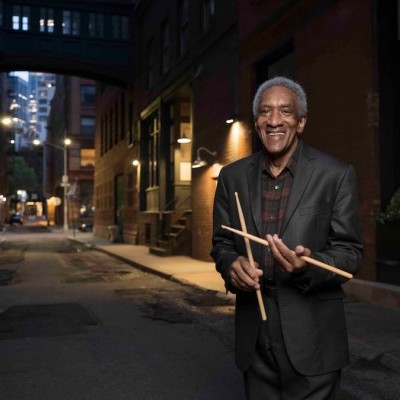
Foster was truly a drummer to the stars, including Miles Davis, Sonny Rollins and Joe Henderson.
Jun 3, 2025 11:25 AM
Al Foster, a drummer regarded for his fluency across the bebop, post-bop and funk/fusion lineages of jazz, died May 28…
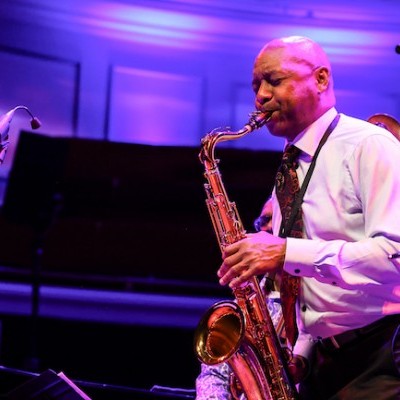
“Branford’s playing has steadily improved,” says younger brother Wynton Marsalis. “He’s just gotten more and more serious.”
May 20, 2025 11:58 AM
Branford Marsalis was on the road again. Coffee cup in hand, the saxophonist — sporting a gray hoodie and a look of…
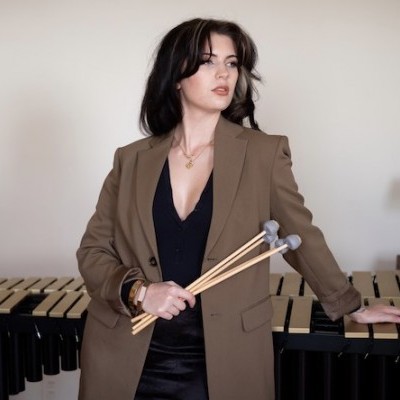
“What did I want more of when I was this age?” Sasha Berliner asks when she’s in her teaching mode.
May 13, 2025 12:39 PM
Part of the jazz vibraphone conversation since her late teens, Sasha Berliner has long come across as a fully formed…

Roscoe Mitchell will receive a Lifetime Achievement award at this year’s Vision Festival.
May 27, 2025 6:21 PM
Arts for Art has announced the full lineup for the 2025 Vision Festival, which will run June 2–7 at Roulette…
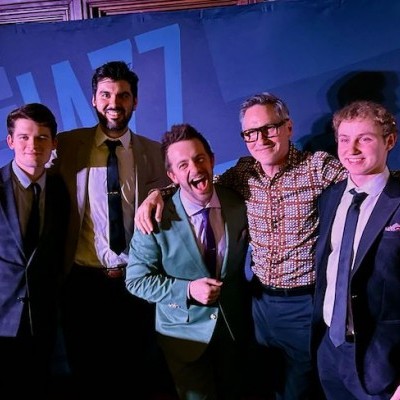
Benny Benack III and his quartet took the Midwest Jazz Collective’s route for a test run this spring.
Jun 3, 2025 10:31 AM
The time and labor required to tour is, for many musicians, daunting at best and prohibitive at worst. It’s hardly…